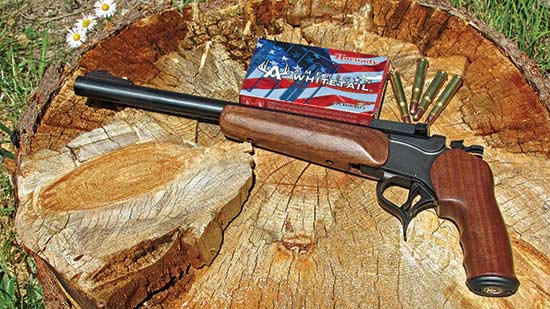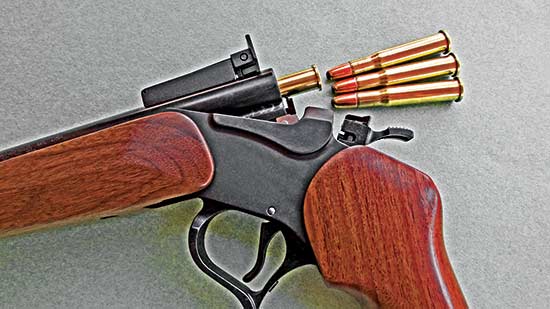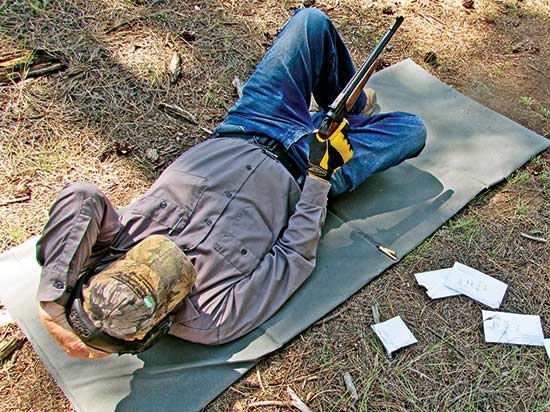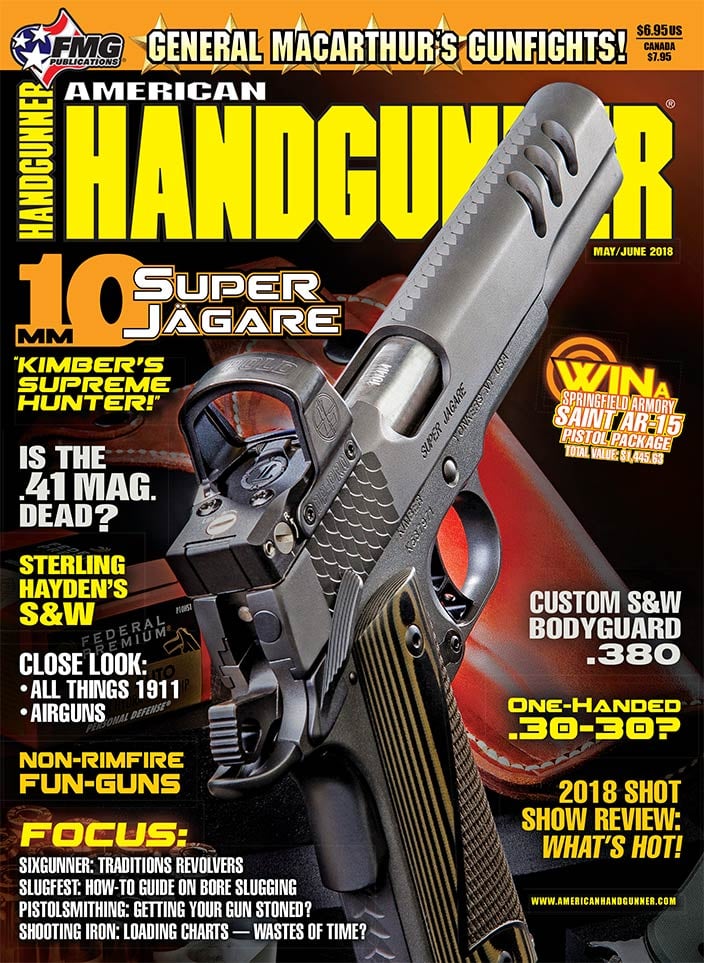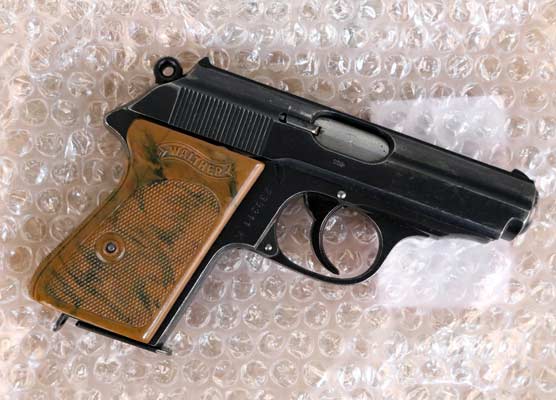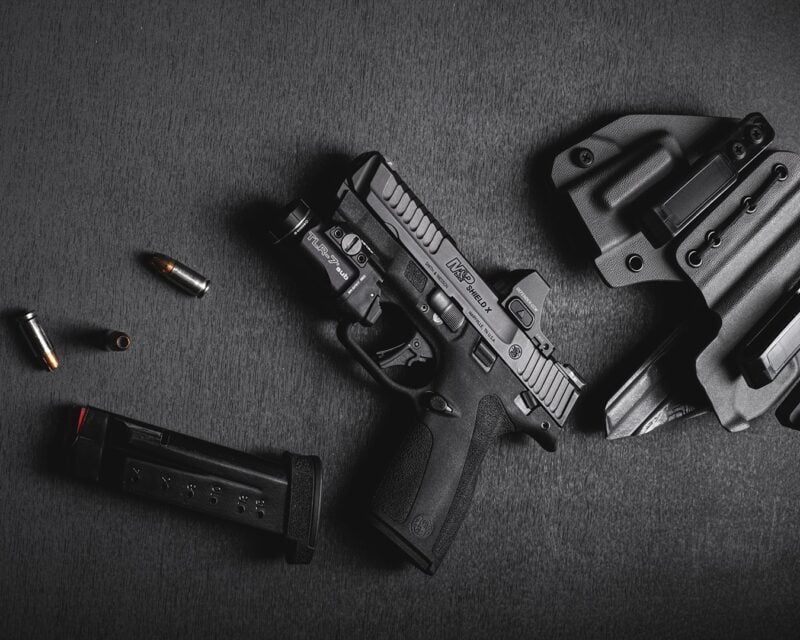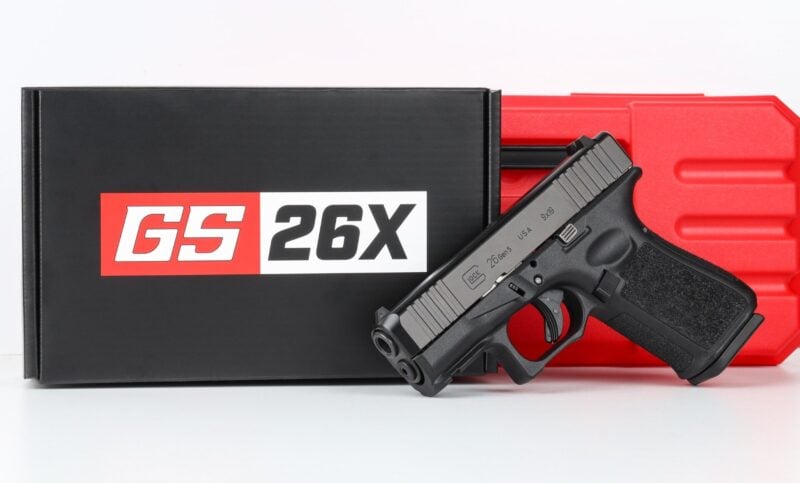Thompson Center's Iconic G2 .30-30
Thompson Center's Iconic G2 .30-30
Good things happened in 1967. Dr. Christian Barnard performed the first successful heart transplant in Cape Town, South Africa. NASA launched the Lunar Orbiter 3 spacecraft to photograph the moon surface for safe landing sites. The Queen Mary II was launched and the famous Boeing 737 took flight.
And something else — the break-action Thompson Center Contender pistol came about, brainchild of Warren Center, in calibers .22 Long Rifle and .38 Special. Soon followed by a cyclone of other cartridges. The pistol boasted rifle-like accuracy for handgun hunting, targets, informal shooting and the challenging new silhouette game.
Barrel changeability was a snap — remove the fore-end, drift out the hinge pin, slip the barrel free and install another. Presto, a new caliber. Today, barrel options are into the stratosphere, with a double firing pin switchover making rimfire/centerfire conversion a snap.
Any sights go with the barrel so there’s no need to recalibrate after a swap. My first Contender was .30-30 Winchester, which DGS of Casper, Wyoming, punched out to .30-30 Ackley Improved, realizing a little more velocity. A .32-20 barrel followed, with more to come. In a moment of temporary insanity, I sold the pistol to a friend “who just had to have it.”
Back In The Fray
My next Contender would also be .30-30 (1:10″ twist, 14″ barrel) left original for everything the pistol was intended to do — hunting, target and silhouette. Barrels for the G1 (Generation1) snap into the G2 frame, with a few exceptions. The 1998 G2 leaves nothing to be desired in a single-shot pistol. All appointments, mechanical to cosmetic, are top-grade. G2 differences are fewer internal parts, trigger shape, non-adjustable trigger, a grip design favoring longer fingers/larger hands, the G2 opens easier than the G1, the hinge pin is tighter, the pivot pin on the G2 is changed to a screw to eliminate side to side drift and the finger lever on the guard is more comfortable.
My goal with the G2 was hunting, along with informal shooting. However, the pistol is ideal for the IHMSA game — International Handgun Metallic Silhouette Association, of which I do not currently participate. But I knew someone who did, with great enthusiasm. “Ron,” I called, “how would you like to come up to the high country and ring-out a G2?” Why not? Soon he was at my high mountain home ready to fire away.
Loads would fit both worlds with plenty of energy for hunting, along with knock-down potential on metallic silhouettes. A high-accuracy load from Lyman’s Number 50 manual is an Oregon Trail 170-gr. Laser-Cast, 18 grains of Accurate 5744 for 1,456 fps. While not always sure in knocking the ram over, it’s the bees’ knees for small game.
The Ballistics
Despite ready-to-go characteristics, the G2 is a candidate for a few after-market mods. Original sights are right — a clean square notch/post. However, I have a little .308 rifle that might get robbed of its glassware, a custom shop Leupold straight 3X. Meanwhile, the silhouette shooter may wish to consider something like the Kensight. It adheres to the IHMSA rule of a maximum 15″ sight radius and is extremely well-made of the finest materials. It’s offered by EABCO, E. Arthur Brown Company, with the sight itself mounted on an EABCO Weaver-type scope rail.
The trigger is considered non-adjustable. However, Bellm’s TCs offers a special spring kit to reduce let-off from the factory 5-lb. to a crisp 3-lb. pull. Mike Bellm has worked with Contenders for 38 years and he even has his own cartridge, a 444 Marlin necked to .30-caliber. He knows his stuff.
The 14″ barrel reduces muzzle velocity gained with longer tubes. But it’s not that bad and at times, hardly worth a mention. A typical example is Remington’s 170-gr. factory soft-point, a load serving me admirably in whitetail thickets with velocity from a 20″ barrel at 2,184 fps. The Contender registered 2,064 fps, still plenty of pasta to put venison on the table or tip over the heavy metal silhouette. For large bore pistol IHMSA targets are full-scale size chicken at 50, pig at 100, turkey at 150 and ram at 200 meters.
Let’s take a peek at some reliable loads I worked up for this great caliber/gun combo. All are amazingly accurate, easy to load and shoot and the components are common. A few of the following loads include longer-barrel results for comparison. Medium burn rate powders were the rule for the .30-30 case capacity.
Round Ball
A plinker and small game load. Hornady .310″ lead balls were selected. Perfect diameter? Nope, but due to swaging down the bore, accuracy results were good enough for the task. Hand-pressed into the mouth of the cartridge with a bit of crimping, these little 45-gr. lead spheres got 900 fps with 4 grains of Unique. Most of my unsophisticated Wyoming cottontails, once spotted, offer 20-yard opportunities. A bag of bunnies was no problem with the meat-saving pipsqueak round ball.
55-grain Accel.
Remember the Remington “Accelerator” loads? They are still sold. I had a box on-hand, so why not chronograph for “the fun of it?” Velocity from the 14″ barrel was 3,016 fps thanks to the Oehler 35 P Proof chronograph. For comparison, 3,289 fps from a 20″ barrel, 3,360 fps from a 24″ barrel and 3,500 fps from a 26″, as would be expected.
110-gr. Sierra SP
At 2,405 fps from the 14″ barrel, this larger-varmint recipe packs the mail. The load: 41.0-gr. W-748.
130-gr. Speer FN
With accuracy running around .75″ at 50 yards for 5-shot strings (iron sights, guys), 38.0-grains of H-335 produced 2,490 fps. Coyotes called in? A whitetail in the thicket? Silhouette of course, but the 170-gr. Laser-Cast 5744 load is just as accurate and kinder to the shooter.
150-gr. Horn. Whitetail
The Hornady Interlock No. 80801 performed superlatively in Sam’s Bullet Box with good penetration, expansion and hang-together results. With a velocity of 2,103 fps, here is a great deer load for the Contender, in a factory offering.
160-gr. Horn.
Hornady’s 160-gr. LeverEvolution factory load at 2,102 fps from the 14″ barrel proved itself on feral hogs, deer, other game. A solid, factory performer.
150-gr. Speer FN
This chronograph test with 37.0 grains of H-335 developed 2,365 fps. Here is an accurate and powerful load for hunting, but perhaps a little too spicy for repeated shooting in the silhouette game.

As modern as today, the gap between the early Winchester Silvertip 170-gr. load to today’s Barnes bullets,
Hornady’s innovative LeverEvolution loads, Federal’s Premium and others keeps the reliable .30-30 still highly
competitive even when pitted against more modern chamberings. The .30-30 still rocks
150-gr. Sierra BT
Of course, one 150-gr. boat-tail bullet is going to produce results like-unto another, but in the name of repeatability, more shooting was done. A velocity of 2,258 fps resulted with 38.5 grains of W-748. There was good downrange retained velocity too. This load in the Contender surely qualifies for 200-yard deer-sized game.
165-gr. Speer BT
This load, produced with hunting in mind, gave “right healthy” recoil in the 3-lb., 13-oz. pistol. A charge of 36.0-grains of RE-15 produced a velocity of 2,193 fps with a very low standard deviation, only 16 fps. For comparison, the same load in my 20″ barrel gave 2,400 fps. Elk in black timber at close range? Perhaps. Hunter’s choice.
170-gr. Sierra FP
Since the much milder Accurate 5744 18-gr. charge with a 170-gr. bullet knocked the ram over, this load would be another hunting choice. A charge of 38.0-grains of LeverEvolution drove the 170-gr. jacketed bullet at 2,222 fps. The 20″ barrel showed 2,250 fps, not much difference at all. This load produced fine accuracy.
Iron Sights
While Ron did all the target shooting, I found two things about the G2 proving its merit in the big game hunting theater — accuracy with power. Especially if the all-but-lost art of stalking is observed. At closer range, one well-placed bullet from any of the stronger factory or handloads, would produce surefire results, as in “meat on the table.”
Good callers would find the handy handgun right for coyotes and similar game. Light loads in the .30-30 would work fine on small edibles, as Lyman cast bullet data verifies. But no doubt the G2 .30-30 will soon be joined by, well — hard to say — too many good choices!
Meanwhile the best silhouette loads turned out to be: 125-gr. Sierra Flat-Base with 3.5-grains of W-748 and 2,038 fps for chicken, pig and turkey. Use the 150-gr. Hornady SST and 34.5-grains of W-748 at 2,064 fps for the ram. Both deliver sub-1″ 3-shot groups at 50 yards consistently.
In closing, all of the loads tested delivered rifle-like accuracy from the TC, even with the old-fashioned iron sights. With a good scope, 1″ 100-yard groups are easily attainable. “His Editorship” Roy hunts with a classic TC Contender with a 14″ .30-30 barrel. Scoped with a Leupold rifle scope, he said 1″ to 2″ at 100 yards from field rests with Buffalo Bore 150-gr. Barnes loads is pretty much the norm. So far, the gun/caliber combo is eight for eight on deer, one shot each. I think there’s a trend here with this caliber and design!
The old-school .30-30 is still as modern as today.

